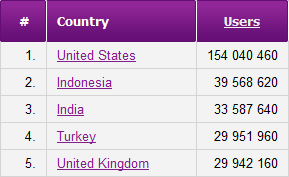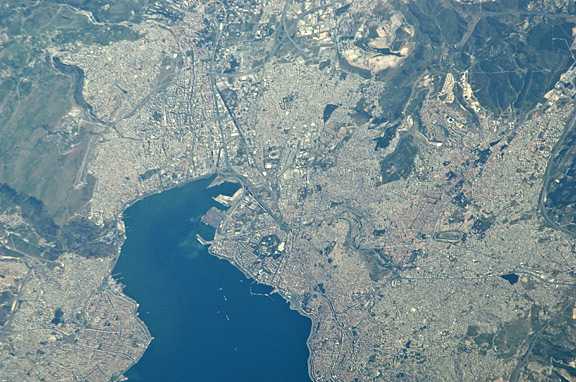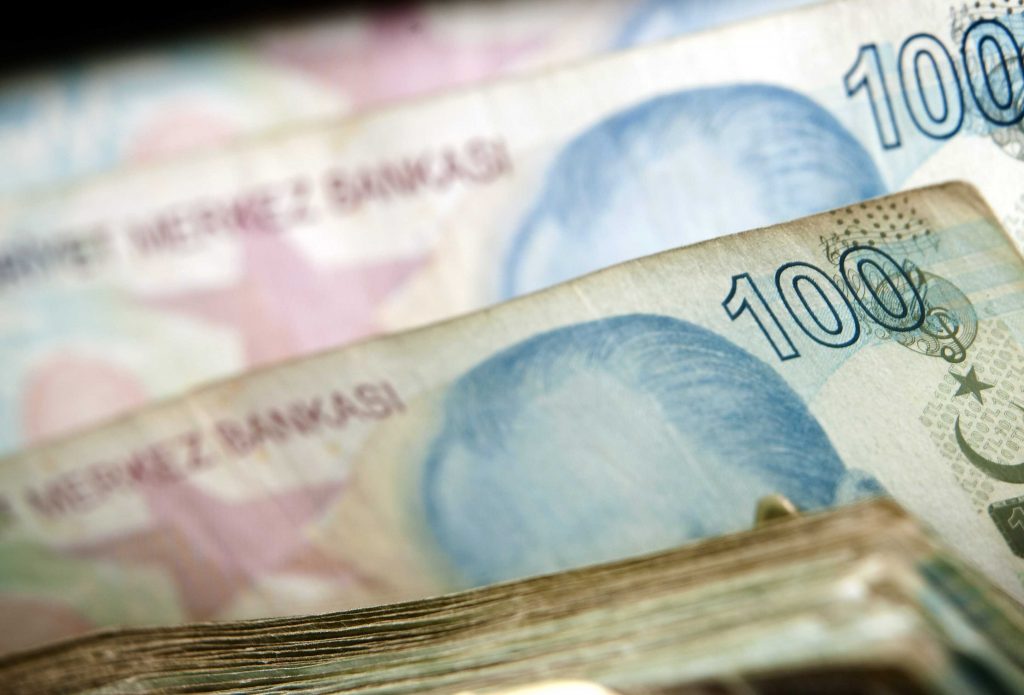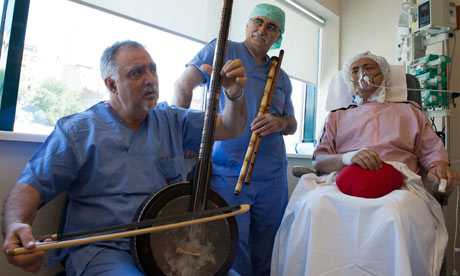Turkcell and Huawei Select NXP Technology to Launch First NFC-Enabled Smartphone in Turkey
T20 Smartphone Brings ‘Mobile Wallet’ to Turkish Consumers
EINDHOVEN, NETHERLANDS, Aug 30, 2011 (MARKETWIRE via COMTEX) — NXP Semiconductors N.V. /quotes/zigman/119156/quotes/nls/nxpi NXPI -2.45% today announced that Turkcell /quotes/zigman/291809/quotes/nls/tkc TKC 0.00% (ise:TCELL), the leading communications and technology company in Turkey, has selected the PN544 near field communication (NFC) radio chip for Turkcell’s recently launched T20 smartphone. The T20 handset, manufactured by Huawei, is one of the world’s first commercially available low-cost Android NFC-enabled smartphones. This NFC-enabled mobile phone will allow consumers to perform a variety of secure contactless transactions from convenient payments, data sharing, public transport, event ticketing and access control, while providing a secure, flexible and interoperable canvass to create the next experience in mobile-on-the-go.
The Turkcell T20 is already pre-loaded with Turkcell Cep-T Cuezdan, a mobile wallet service from Turkcell developed by Turkcell Technology on Gingerbread 2.3.3 OS. Via the NFC-enabled phone, consumers can transform their physical wallet into a mobile one and provide an easy-to-use and secure mobile transaction environment for all the daily needs of Turkcell’s subscribers. Cep-T Cuezdan subscribers can also benefit from the discovery screen in the UI that allows them to know which cards they can include in their mobile wallet.
Offering secure data storage, payment and transaction, the T20 handset uses a secure element in the SIM card, which is connected to NXP’s NFC chip, PN544, via the single wire protocol (SWP). The resulting NFC solution enables secure wireless two-way communication between the T20 Smartphone and other phones, terminals or readers. NXP provides a fully compliant end-to-end NFC platform for handset manufacturers and operators enabling next-generation NFC devices and services. Complementing the secure NFC solutions, NXP offers a complete open source software stack for NFC which is fully integrated and validated on the Gingerbread Android(TM) platform.
“NFC technology is instrumental in helping us to achieve our ambition of increasing the penetration of mobile contactless innovations in the Turkish market,” said Cenk Bayrakdar, Chief New Technology Business Officer, Turkcell. “Working with NXP, we were able to build a feature-rich, interactive and flexible mobile wallet solution through the open source Android platform. This is our first commercial smartphone developed on Gingerbread 2.3.3 OS and we are extremely pleased to be first to market with this innovation in Turkey.”
“NFC offers a truly exciting technology that will enhance every aspect of the mobile experience for consumers. Working with NXP, we are able to quickly bring to market the latest NFC-enabled handsets and mobile devices on a global scale while maintaining low implementation and development costs,” said Anil Oeztekin, Turkcell sales director, Huawei Turkey Terminal Department.
“NXP co-invented NFC with the aim of putting the mobile phone at the center of the consumer’s world — the launch of the T20 is a significant achievement and truly supports our ambition to enable more and more NFC-based services around the world,” said Jeff Miles, vice president, mobile transactions, NXP Semiconductors. “We have created secure NFC solutions that can support a variety of mobile wallet applications to help mobile handset manufacturers, banks, retailers and network operators offer new services to diversify their business and provide added value to customers.”
NXP has demonstrated that customers can now build secure NFC-enabled mobile wallets using an embedded secure element, secure element in the SIM, or micro-SD based secure element. The company offers secure and flexible solutions for all configurations and use cases.
Links
— NXP portfolio for NFC
— NXP PN544 Product Sheet
— Additional information on near field communication (NFC)
— Turkcell T20 press release (July 7, 2011)
About Turkcell
Turkcell is the leading communications and technology company in Turkey with 34.1 million subscribers and a market share of approximately 54% as of June 30, 2011 (source:Operator’s announcements and excluding the impact of the change in prepaid churn periods in Q2 2011). Turkcell is a leading regional player, with market leadership in five of the nine countries in which it operates with its approximately 61.7 million subscribers as of June 30, 2011. The company covers approximately 85% of the Turkish population through its 3G and 99.07% through its 2G technology supported network. It has become one of the first among the global operators to have implemented HSDPA+ and achieved a 42.2 Mbps speed using the HSPA multi carrier solution. Turkcell reported a TRY2.3 billion (US$1.5 billion) net revenue with total assets of TRY15.5 billion (US$9.5 billion) as of June 30, 2011. It has been listed on the NYSE and the ISE since July 2000, and is the only NYSE-listed company in Turkey. Read more at www.turkcell.com.tr
About Huawei
Huawei Device is a global leader in providing smart devices that connect you with the world, simply. Huawei Device partners with 500 operators, including the world’s top 50 operators, across 140 countries. Huawei’s products and solutions have been deployed in over 100 countries and support the communications needs of one third of the world’s population. The company is committed to providing innovative and customized products, services and solutions to create long-term value and growth potential for its customers.
About NXP Semiconductors
NXP Semiconductors N.V. /quotes/zigman/119156/quotes/nls/nxpi NXPI -2.45% provides High Performance Mixed Signal and Standard Product solutions that leverage its leading RF, Analog, Power Management, Interface, Security and Digital Processing expertise. These innovations are used in a wide range of automotive, identification, wireless infrastructure, lighting, industrial, mobile, consumer and computing applications. A global semiconductor company with operations in more than 25 countries, NXP posted revenue of $4.4 billion in 2010. For more information visit www.nxp.com .
Forward-looking Statements
This document includes forward-looking statements which include statements regarding NXP’s business strategy, financial condition, results of operations, and market data, as well as any other statements which are not historical facts. By their nature, forward-looking statements are subject to numerous factors, risks and uncertainties that could cause actual outcomes and results to be materially different from those projected. These factors, risks and uncertainties include the following: market demand and semiconductor industry conditions; the ability to successfully introduce new technologies and products; the end-market demand for the goods into which NXP’s products are incorporated; the ability to generate sufficient cash, raise sufficient capital or refinance corporate debt at or before maturity; the ability to meet the combination of corporate debt service, research and development and capital investment requirements; the ability to accurately estimate demand and match manufacturing production capacity accordingly or obtain supplies from third-party producers; the access to production capacity from third-party outsourcing partners; any events that might affect third-party business partners or NXP’s relationship with them; the ability to secure adequate and timely supply of equipment and materials from suppliers; the ability to avoid operational problems and product defects and, if such issues were to arise, to correct them quickly; the ability to form strategic partnerships and joint ventures and to successfully cooperate with alliance partners; the ability to win competitive bid selection processes to develop products for use in customers’ equipment and products; the ability to successfully establish a brand identity; the ability to successfully hire and retain key management and senior product architects; and, the ability to maintain good relationships with our suppliers. In addition, this document contains information concerning the semiconductor industry and NXP’s business segments generally, which is forward-looking in nature and is based on a variety of assumptions regarding the ways in which the semiconductor industry, NXP’s market segments and product areas may develop. NXP has based these assumptions on information currently available, if any one or more of these assumptions turn out to be incorrect, actual market results may differ from those predicted. While NXP does not know what impact any such differences may have on its business, if there are such differences, its future results of operations and its financial condition could be materially adversely affected. Readers are cautioned not to place undue reliance on these forward-looking statements, which speak to results only as of the date the statements were made. Except for any ongoing obligation to disclose material information as required by the United States federal securities laws, NXP does not have any intention or obligation to publicly update or revise any forward-looking statements after we distribute this document, whether to reflect any future events or circumstances or otherwise. For a discussion of potential risks and uncertainties, please refer to the risk factors listed in our SEC filings. Copies of our SEC filings are available from on our Investor Relations website, www.nxp.com/investor or from the SEC website, www.sec.gov .
Image Available:
SOURCE: NXP Semiconductors
Copyright 2011 Marketwire, Inc., All rights reserved.





